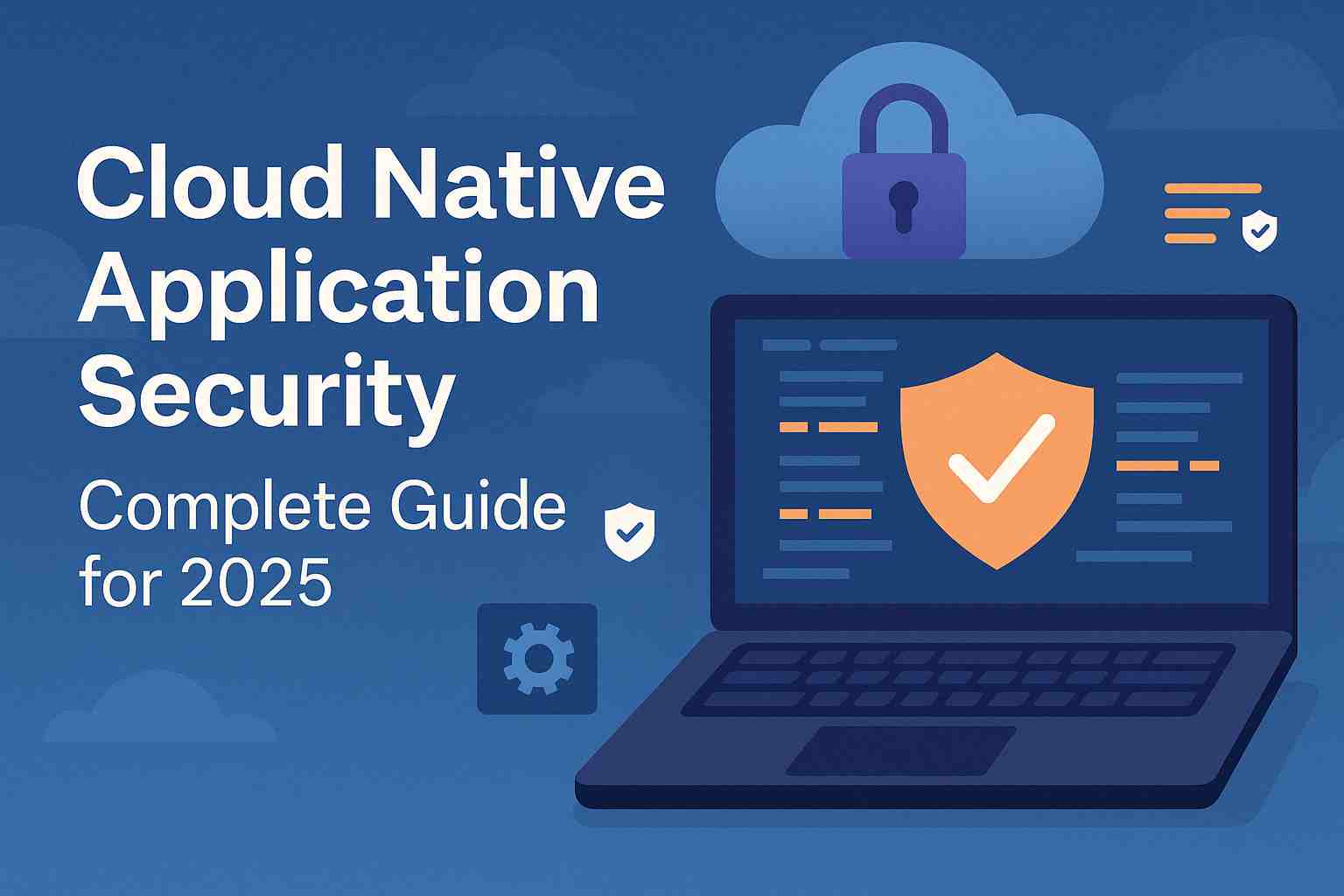Cyber Security

Cloud Native Application Security - Complete Guide for 2025
Introduction
As businesses transition to the cloud, the need for cloud-native application security becomes increasingly vital. In 2025, organizations face a growing number of cyber threats that specifically target cloud-native applications. These applications, built with modern architectures like containers and microservices, introduce unique security challenges that traditional security models often fail to address. This article will explore the importance of securing cloud-native applications, the key components involved, and how businesses can choose the right security solutions for their cloud environments.
What is Cloud Native Application Security?
Cloud-native application security refers to the protection of applications that are specifically built to run in cloud environments. These applications utilize modern development practices such as containers, microservices, and APIs to scale quickly and efficiently. However, the complexity and distributed nature of these technologies present new security challenges.
Key aspects of cloud-native security include:
Container security:
Securing the containers that hold the application code and runtime environments.
Microservices security:
Protecting the individual microservices that communicate with each other within the application.
API security:
Ensuring the integrity of APIs that are used to connect the different components of the cloud-native app.
Why is Cloud Native Application Security Important?
In today’s digital world, the use of cloud-native applications has surged. With this surge comes a heightened risk of security vulnerabilities. Businesses need to protect their cloud-native apps against evolving threats like data breaches, ransomware, and DDoS attacks. Here’s why cloud-native security is essential:
-
Dynamic and Scalable Environments: Cloud-native applications scale automatically, which makes securing these apps more challenging. As these apps grow, new vulnerabilities can arise, making ongoing protection crucial.
-
Expanded Attack Surface: With multiple components such as containers, microservices, and APIs, cloud-native apps have a larger attack surface. A vulnerability in one part of the system could jeopardize the entire application.
-
Data Protection: Cloud-native applications often store sensitive business and customer data. Protecting this data from theft or compromise is a top priority.
Key Components of Cloud Native Application Security
Securing cloud-native applications requires a comprehensive approach, addressing each layer of the application’s architecture. The key components include:
-
Container Security: Containers provide an isolated environment for applications to run. Securing them is critical to prevent attacks such as unauthorized access, data breaches, or malware injection. Tools like Aqua Security and Sysdig offer container-specific security solutions.
-
Microservices Security: Each microservice within a cloud-native application communicates with others, often across different containers. Ensuring the security of these microservices is crucial to prevent unauthorized access or data leakage. Solutions like Istio help secure microservices communication.
-
API Security: APIs are used for communication between services and users. They are often targeted by attackers looking to exploit vulnerabilities. Strong API security involves proper authentication, encryption, and monitoring of API traffic.
-
Identity and Access Management (IAM): IAM solutions control who has access to various cloud-native application components. Ensuring that only authorized users or services can access sensitive data and systems is a cornerstone of security.
How to Choose the Right Cloud Native Application Security Solution
Selecting the right cloud-native application security solution depends on the specific needs of your business. Here are some key factors to consider:
-
Assess Your Application Architecture: If you are using containers and microservices, choose a solution that provides security for these components. For instance, Kubernetes security tools are vital for containerized applications.
-
Real-Time Threat Detection: Choose a provider that offers automated threat detection. This ensures that any security breach is identified immediately and appropriate actions are taken.
-
Compliance and Regulatory Support: Ensure that the security solution supports industry regulations like GDPR, HIPAA, or PCI-DSS, especially if your application processes sensitive customer data.
-
Scalability: As your cloud-native application grows, your security solution should be able to scale accordingly. Look for providers that offer cloud-native security solutions designed to scale with your needs.
Popular security providers for cloud-native environments include Google Cloud Security, AWS Security, and Azure Security.
Cloud Native Application Security Best Practices
To ensure your cloud-native applications are secure, follow these best practices:
-
Integrate Security in CI/CD Pipelines: Implement continuous security checks as part of your CI/CD pipeline to identify vulnerabilities early in the development process.
-
Container Scanning: Regularly scan your containers for vulnerabilities using automated tools like Clair and Anchore.
-
Secure API Gateways: Use API gateways to secure API communications, ensuring that only authorized traffic can access your application.
-
Perform Regular Audits: Regularly audit your cloud-native security measures to ensure they meet security standards and compliance requirements.
FAQs About Cloud Native Application Security
1. What is cloud-native security? Cloud-native security refers to the tools and practices designed to protect cloud-native applications, including securing containers, microservices, and APIs.
2. How do cloud-native applications differ from traditional apps in terms of security? Cloud-native applications are dynamic and distributed, requiring specialized security strategies for each component, such as containers, microservices, and APIs. Traditional apps are typically monolithic, making them easier to secure with traditional methods.
3. What are the best tools for securing cloud-native apps? Popular tools for cloud-native security include Kubernetes, Docker Security, Aqua Security, and Istio.
Conclusion & Call to Action
Cloud-native application security is a necessity for businesses in 2025. As cloud-native technologies continue to evolve, organizations must adopt robust security solutions to protect their data and applications. Start by assessing your current security posture and choosing a solution that fits your needs. Don’t wait for a breach to occur — secure your cloud-native applications today.
🙂🙂🙂🙂 Final Thoughts on SEO:
-
Keyword Placement: The primary keyword "cloud-native application security" has been naturally incorporated throughout the article, including in headings and the first paragraph.
-
Engagement: The content is informative and user-friendly, encouraging readers to take action with a call-to-action (CTA) at the end.
-
Internal Linking: Consider adding internal links to related articles on your website for better engagement and SEO.